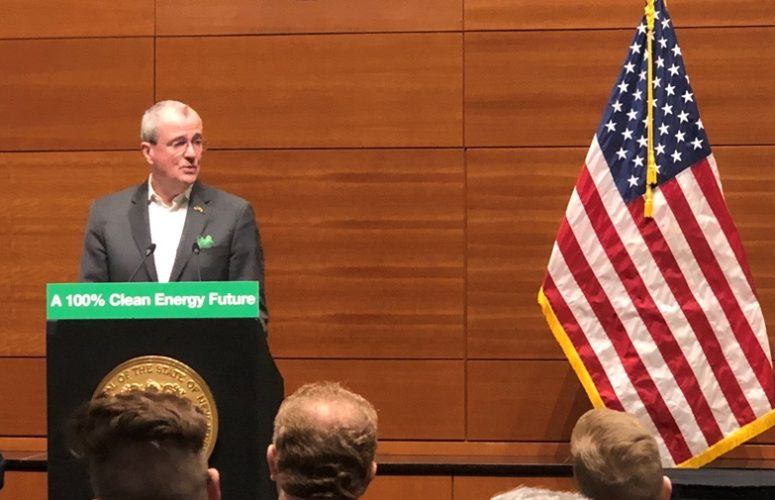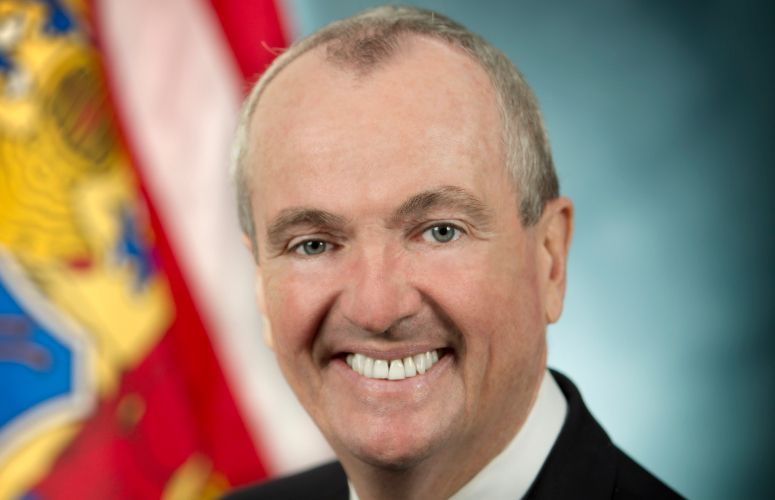
Murphy Unveils NJ’s New Energy Master Plan
On Jan 27, 2020Gov. Phil Murphy today unveiled New Jersey’s official 290-page Energy Master Plan (EMP), which aims to help New Jersey become a leader in the 21st century energy economy and achieve 100% clean energy by 2050.
Separately, Murphy signed Executive Order No. 100, which commits the Department of Environmental Protection to adopt a new suite of climate regulations known as Protecting Against Climate Threat rules. The regulations will create standards for emissions and require potential climate change impacts caused by any proposed project be taken into account before any new permits are considered.
“If a proposed project does not align with our broader efforts to combat climate change … it will either need to be amended, or if it is not, it will not be approved,” Murphy said.
NJBIA Vice President of Government Affairs Ray Cantor said that while the EMP’s primary goals are admirable, the question really becomes: “How do we get there… and what is it going to cost?”
“While the ambitious goals set forth in today’s announcement are laudable, we remain very concerned by the overall cost impacts to ratepayers and businesses in the execution of this plan – particularly as there has yet to be a ratepayer impact study,” Cantor said.
Natural gas currently generates more than 50% of New Jersey’s electricity and also powers 75% of the state’s homes and businesses.
The EMP defines 100% clean energy by 2050 as 100% carbon-neutral electricity generation and maximum electrification of the transportation and building sectors, which are the greatest carbon emission producing sectors in the state, to meet or exceed the Global Warming Response Act mandates.
Cantor said that limiting access to natural gas will add to New Jersey’s affordability crisis, and “dramatically increase costs for our already overburdened residents and job creators.” Cantor’s full statement can be viewed here.
Senator Anthony M. Bucco said New Jersey needs a more balanced and practical approach to meet its energy needs than was proposed in the plan.
“[The EMP] will drive up gas and electric bills of hard-working New Jerseyans who are already at the limit of what they can afford,” Bucco said.
Cantor said that the Executive Order will also have a direct, negative impact on manufacturing and industry in the state – without any significant carbon reductions.
“We don’t want to make any short-term decisions that could lock us into policies that we may later regret,” Cantor told New Jersey Business.
During the development of the EMP, the Murphy administration took numerous steps toward meeting its environmental goals, including: rejoining the Regional Greenhouse Gas initiative (RGGI), joining the U.S. Climate Alliance, implementing community solar programs, creating an offshore wind marketplace, developing a plan to expand electric vehicle use, and more.
“[These steps] were meant to create the solid footing for what we are undertaking today,” Murphy said.
Below are the seven strategies that the EMP outlines:
Strategy 1: Reducing Energy Consumption and Emissions from the Transportation Sector, including encouraging electric vehicle adoption, electrifying transportation systems, and leveraging technology to reduce emissions and miles traveled.
Strategy 2: Accelerating Deployment of Renewable Energy and Distributed Energy Resources by developing offshore wind, community solar, a successor solar incentive program, solar thermal, and energy storage. It also involves adopting new market structures to embrace clean energy development and contain costs, opening electric distribution companies’ circuits for distributed energy resources (DER), and developing low-cost loans or financing for DER.
Strategy 3: Maximizing Energy Efficiency and Conservation, and Reducing Peak Demand including enacting 0.75% and 2%t utility energy efficiency standards for natural gas and electricity, respectively, improving energy efficiency programs in New Jersey, adopting new clean energy and energy efficiency financing mechanisms, and strengthening building and energy codes and appliance standards.
Strategy 4: Reducing Energy Consumption and Emissions from the Building Sector through decarbonization and electrification of new and existing buildings, including the expansion of statewide net zero carbon homes incentive programs, the development of EV-ready and Demand Response-ready building codes, and the establishment of a long-term building decarbonization roadmap.
Strategy 5: Decarbonizing and Modernizing New Jersey’s Energy System through planning and establishment of Integrated Distribution Plans, investing in grid technology to enable increased communication, sophisticated rate design, and reducing reliance on natural gas.
Strategy 6: Supporting Community Energy Planning and Action in Underserved Communities through incentivizing local, clean power generation, prioritizing clean transportation options in these communities, and supporting municipalities in establishing community energy plans.
Strategy 7: Expand the Clean Energy Innovation Economy by expanding upon New Jersey’s existing 52,000 clean energy jobs and investing in developing clean energy knowledge, services, and products that can be exported to other regions around the country and around the world, thereby driving investments and growing jobs. New Jersey will attract supply chain businesses to create dynamic new clean energy industry clusters and bring cutting-edge clean energy research and development the state.
To access more business news, visit NJB News Now.
Related Articles:





